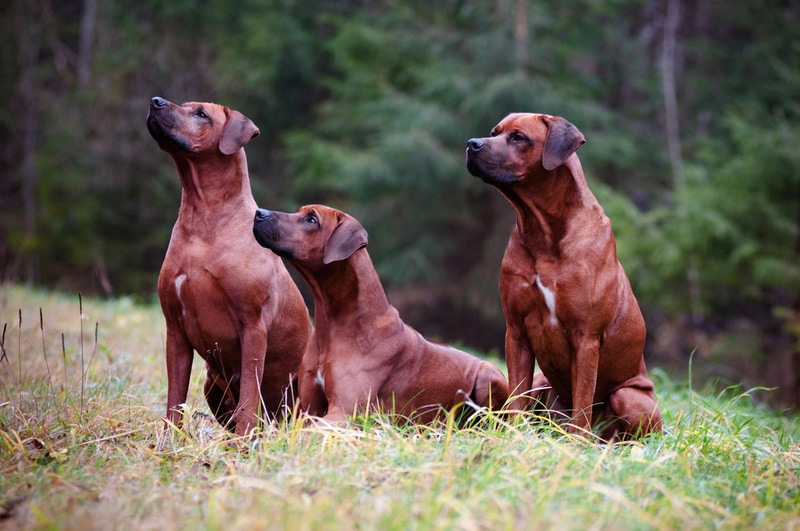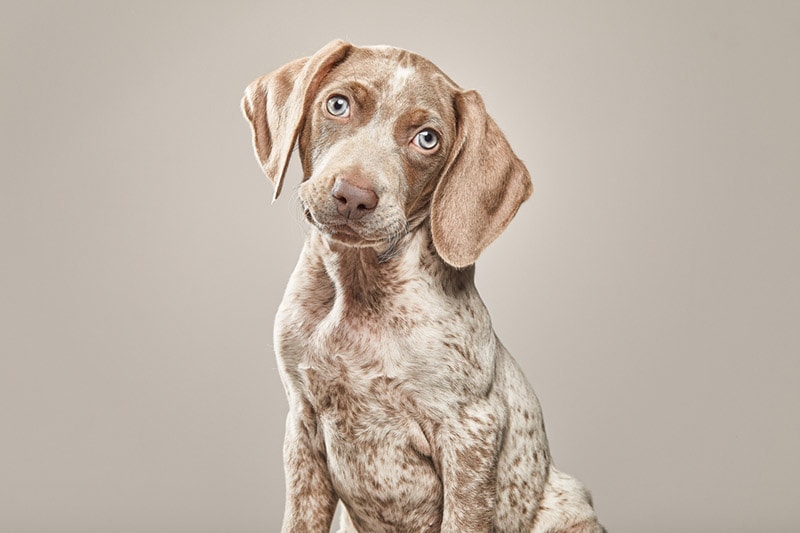How to Train a Basset Hound: 7 Expert Tips

Updated on
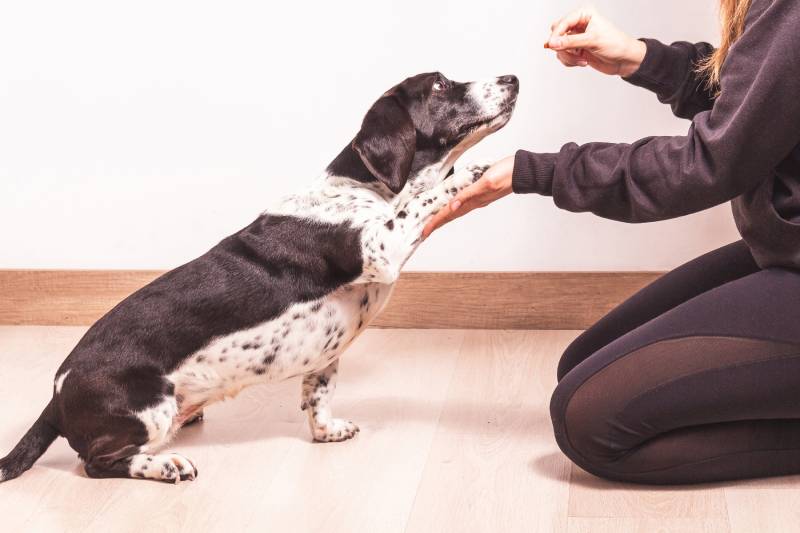
Basset Hounds are one of the most adorable and charming dog breeds around, with their droopy ears and soulful eyes. But behind that sweet exterior is a hunting dog with a strong natural canine instinct, which can make training them a bit of a challenge. But fear not, with the right techniques and a little patience, you can unleash the best in your Basset Hound and turn them into a well-trained, obedient pup. Let’s look at some tips and tricks to help you train your Basset Hound effectively to help create a harmonious relationship together.
Before You Begin
Before you start training your Basset Hound, it’s essential to understand their breed characteristics. Basset Hounds were originally bred in France and were used for hunting different types of game, and they have a strong natural instinct to follow their nose. They are scent hounds, which means they’re more interested in following scents than listening to their owners. They’re also known for their stubborn streak, which can make training them a bit of a challenge. However, with patience and consistency, you can train your hound effectively.
The 7 Tips for Training a Basset Hound
1. Use Positive Reinforcement
Positive reinforcement is one of the most effective training techniques for these hounds. This technique involves rewarding your dog for good behavior with treats, praise, or toys. You really have to be consistent with positive reinforcement and give rewards immediately after your pup’s good behavior.
When using positive reinforcement, use a high value treat that your hound loves. This will help motivate them to learn and reinforce good behavior. You should also use a positive tone of voice and lots of praise to reinforce a job well done.
Always avoid punishment or negative reinforcement when training your Basset Hound. This can be counterproductive and can lead to fear and anxiety in your dog. Instead, focus on rewarding good behavior.

2. Basic Obedience Training
Basic obedience training is an essential part of training all dogs, and hounds are no different. This training will help your dog learn basic commands like sit, stay, come, and heel. It’ll also help you establish yourself as sort of the “pack leader” and build a strong bond with your dog.
When training your Basset Hound, it’s best to start with basic commands and gradually build up to more complex commands. You should also keep training sessions short and consistent and have some of your dog’s favorite treats on standby.
To teach your dog a few basic commands, start by using a high value treat to get their attention. Then, use a clear and consistent command, such as “Sit,” while gently guiding them into the desired position. When they sit, reward them with the treat and lots of verbal praise. Repeat this process until your hound responds to the command consistently. Note that it may take a few weeks for this to become ingrained in the dog’s memory – so patience is absolutely key to success.
3. Crate Training the Right Way
Crate training is an effective way to train your dog and keep them safe and secure while they’re at home, something that can be essential if your dog is still a puppy and you need to leave it home alone while you go to work or out for errands. A crate provides a safe and comfortable space for your dog, and it can also help with house training and separation anxiety.
When crate training your Basset Hound, it’s so crucial to choose the right size crate. The last thing you want is for your puppy to become a bit claustrophobic because its crate is simply too small and he can’t move around comfortably. The crate should be wide and long enough for your dog to turn completely around, stand up, and lay on its stomach without being cramped. But it shouldn’t be so big to where the dog has enough room to use one end as a bathroom – and yes, they will try this.
To introduce your hound to the crate, start by placing treats and toys inside the crate and encouraging them to explore. Gradually increase the amount of time your dog spends in the crate, and always reward good behavior with treats and praise. And like any other type of training, note that this may take time so give it a few days – consistency is key.
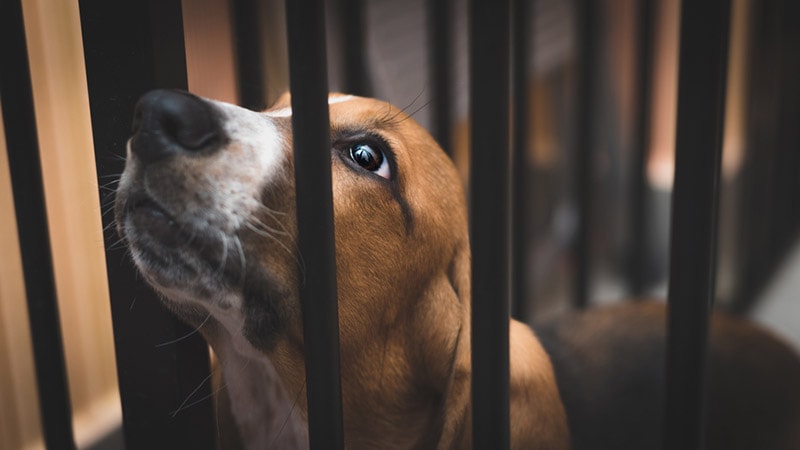
4. Potty Training to Reduce Accidents
Basset Hounds, just like any other type of dog breed, are going to be prone to accidents and will use the bathroom in the house whenever it is more convenient for them. So you’ll need to establish a consistent potty routine and be patient with your dog.
To potty train your hound, start by taking them outside to the same spot every time they need to go. Look for signs of them sniffing around in circles, which is a good indicator that they’re looking for somewhere to use the bathroom. Use a consistent command, like “go potty,” and reward them with treats and praise when they go. Gradually increase the amount of time between potty breaks, and always reward good behavior.
It’s important to always supervise your Basset Hound closely during potty training and to clean up indoor accidents with an enzymatic cleaner (which will keep stains and odors from setting in) to remove the scent and discourage repeat accidents. If you have a young pup (one that’s under 10–12 weeks old), note that potty training is going to take some time and patience.
So never enforce any negative training habits such as hitting the dog with newspaper or dragging it over to the place of its accident. These types of reinforcements are not only abusive, but they’ll only cause the dog to develop anxiety and it may make their training more difficult.
5. Socialization Training to Reduce Biting & Aggression
Socializing your Basset Hound while it’s young will help it to become a well-adjusted and confident dog. So, what does this involve exactly? Socialization just involves exposing your dog to a variety of people, animals, and environments in a positive and controlled way.
To start this training, all you need to do is get into the habit of introducing them to new people and dogs in a controlled environment. Use treats and praise to reinforce good behavior, and gradually increase the level of exposure as your dog becomes more comfortable.
And be sure to expose your pup to a variety of environments, such as parks, busy streets, and other public places – not just the same people within your household. This will help them become comfortable in different situations and reduce their anxiety and fear. And the less fearful they are of other people and other animals, the less aggressive they will be as adults.
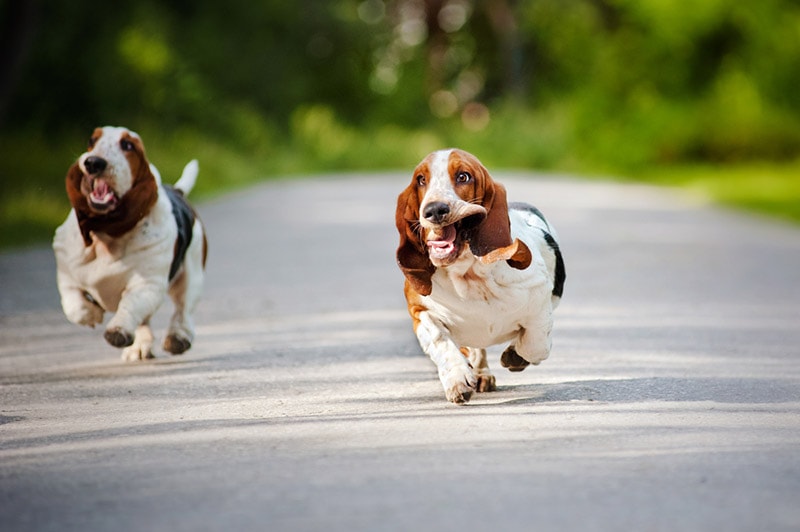
6. Behavioral Training for Issues in Basset Hounds
Basset Hounds are prone to some common behavioral issues, such as barking, digging, and chewing. These behaviors can be frustrating (especially for newbie dog owners), but with patience and consistency, you can help your Basset Hound overcome them.
To address barking, try to identify the cause of the barking and address it. For example, if your dog is barking at people walking by, you can use positive reinforcement to teach them to be quiet when people walk by. Note that barking may also be a sign of stress, physical discomfort, potty time, or hunger. The best way to figure out how to curb that is to pay close attention to when your dog is barking.
To address digging and chewing, it’s important to provide your Basset Hound with appropriate toys and chew items to help it burn off some of that energy. You can also use positive reinforcement to teach them what is appropriate to chew and dig and what is not. It may even be helpful to give them more outside time, such as going for walks or days out in the dog park, as they may simply be anxious and turn to chewing and digging because they’re bored.
7. Advanced Agility and Tracking Training
Once your hound has mastered basic obedience training, you can perhaps consider advanced training activities like agility and tracking. These activities can provide mental and physical stimulation for your dog and help it burn off some energy. Keep in mind that it’s best for these dogs to have at least an hour of exercise every day to keep them physically stimulated and in good physical health (not to mention it keeps them from climbing the walls).
Agility training involves teaching your hound to navigate obstacle courses, such as jumps, tunnels, and weave poles. This training can greatly improve your dog’s coordination and confidence.
Tracking training involves teaching your Basset Hound to follow a scent trail. This training can tap into your dog’s natural instinct to follow scents and provide mental stimulation. To start advanced training, it’s best to find a qualified trainer who specializes in these activities. Tracking training is helpful if you plan to hunt with your dog or are training these dogs to work in law enforcement or military services.
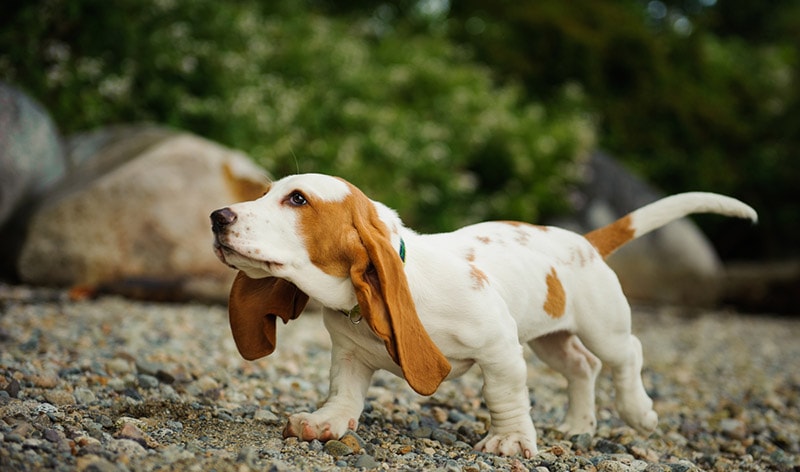
Wrapping Up
Training your Basset Hound can be a challenging but rewarding experience. When training your hound, keep in mind that they’re pack animals and thrive on social interaction. They also have a tendency to gain weight as they age, so make sure they get enough exercise and a healthy diet.
Note that Basset Hounds have a keen sense of smell, which can make them prone to distraction during training. They may get sidetracked by interesting smells, so try to keep training sessions short and focused.
And there you have it. With a lot of patience, consistency, and positive reinforcement, you can unleash the best in your Basset Hound and help them grow into outstanding adult dogs.
Featured Image Credit: Fabian Ponce Garcia, Shutterstock


